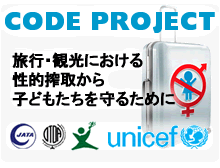732 sexual incidents at children’s care homes spotlight need for preventive measures
, TOKYO — Results of a welfare ministry survey that found 732 cases of sexual indecency involving residents of care homes for children in fiscal 2017 highlights the need for swift preventative measures by the government and other parties concerned.
According to the survey conducted in January and February this year, 1,371 residents at the homes for children unable to live with their parents were involved in the cases as either perpetrators or victims. As of the end of March 2018, around 25,000 children were living at some 600 care homes across the country.
Unlike at schools, there are times and places at the care facilities that staff cannot directly monitor the children. Moreover, children tend to hesitate to complain to facility staffers about sexual assault or harassment by other children, making it difficult to uncover such incidents.
Though it is an urgent task for care homes to implement preventive measures, managers of about half of the facilities surveyed responded that they feel they do not have enough expertise to respond to sexual incidents involving children. However, there are a growing number of care homes that teach children about the importance of protecting their bodies and how to keep an appropriate distance from other people as part of sex education.
Kunio Kuroda, manager of the Aikeikai Nyujiin facility in the western Tokyo city of Machida, underscored the need to “share know-how and implement it.” Kuroda has been involved in the reform of a facility where serious cases of violence occurred.
While considering preventive measures, the Health, Labor and Welfare Ministry is poised to downscale each facility to make sure that staffers can keep a close eye on children under their care.
However, some facility managers warn that cutting care home capacity could lead to more sexual incidents behind closed doors.
The ministry and other experts should not turn a blind eye to sexual incidents involving children at care facilities, but rather further analyze the outcome of the survey to implement effective measures to prevent such cases.
(Japanese original by Hitomi Tanimoto, Lifestyle and Medical News Department)


